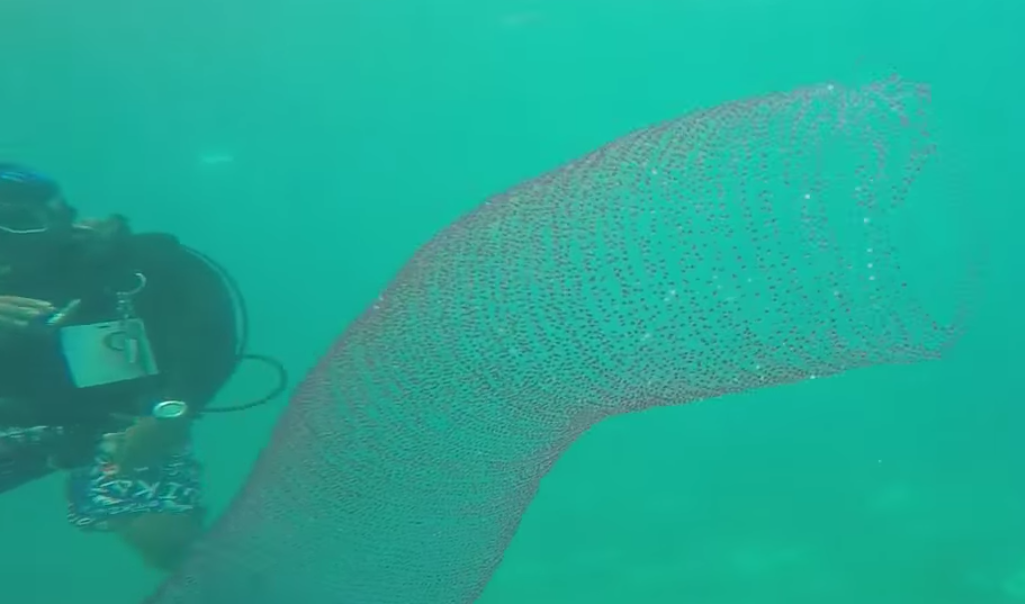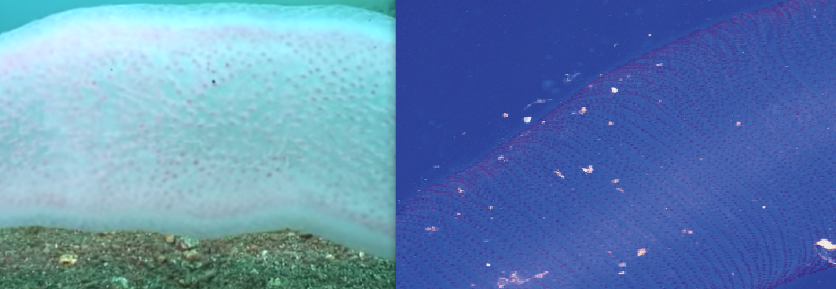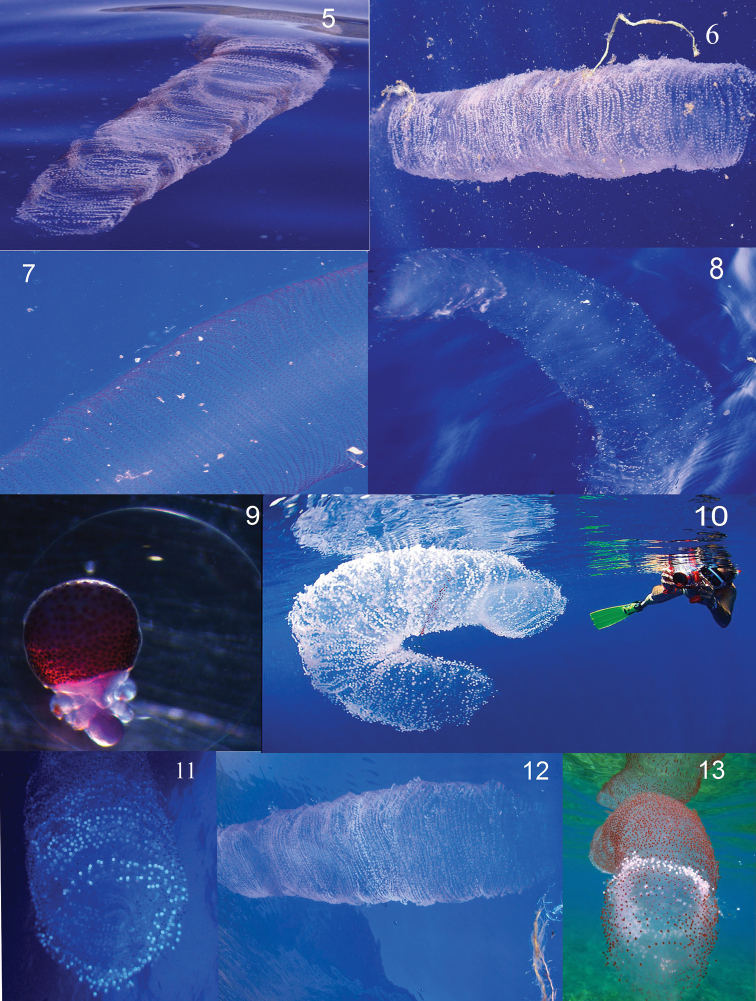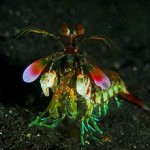Hi lovely internet. I’ve noticed lots of folks getting really excited about a new video going viral. Many are calling this giant strange worm a pyrosome. Now, I love pyrosomes. I’ve written about pyrosomes and am very honored that news sites are quoting my article in their coverage of this video. Thank you. It means a lot and I’m impressed at the amount of good information out there. The thing is, I don’t think this is what you think it is.
Apparently, a Reddit user identified this animal as a pyrosome. I’ll be the first to admit, identifying long blob animals is a rather esoteric art, and ‘pyrosome’ is a good guess. However, let’s take a closer look at this video. Here’s a screen cap showing a close-up of the mass:
Notice that’s is really transparent, except for long thin dotted pink lines swirling around the mass. The whole structure appears quite fragile. Now take a look at these next two pictures and ask yourself which looks more similar:
The picture on the left is a close-up of a pyrosome (from this video*). It looks rather sturdy, it has some meat to it, and if you watch the video (starting at 0:10) you’ll see it’s quite robust. The zooids, or little swimming bodies of the pyrosome, are not arranged in nice lines, they’re sort of scattered. The animal itself is not particularly see-through, though it’s a little bit transparent. The picture on the right, in contrast, is a close-up of a diamond-shaped squid (Thysanoteuthis rhombus) egg case (which I wrote about here). The egg mass looks quite fragile, it’s almost clear, and there are lots of little pink dots arranged in swirling lines. Transparent, pink dots in long thin swirling lines, fragile in appearance–check check check, and check.
Now, putting a positive ID on an organism from a video is no easy task. Still not convinced? Check out these additional pictures of diamond-shaped squid egg masses [1]:
My professional opinion? This video is not of a pyrosome. But does this make it less exciting?ABSOLUTELY NOT! If anything, this is more exciting. These egg masses are incredibly rare. The adults are large (1 meter in length and 30 kg) but elusive, and lay these eggs in the open ocean. This video is one of the best I’ve seen, and certainly one for the record books. If I were there I would have been screaming with joy through my regulator. I hope the divers know what a lucky sighting this was. And next time I hope they invite me, because I’d love to see one of these up close. (and I’d really love to be diving in shorts right now!)
*This video actually shows shows both a pyrosome and an egg case. Watch for the egg case in the second half of the video.
Work cited and additional info
If you’d like to learn more about diamond-shaped squid (Thysanoteuthis rhombus) or their egg masses, check out these two great papers
[1] Alejandro Escánez Pérez, Rodrigo Riera Elena, Ángel Francisco González González, and Ángel Guerra Sierra. On the occurrence of egg masses of the diamond-shaped squid Thysanoteuthis rhombus Troschel, 1857 in the subtropical eastern Atlantic (Canary Islands). A potential commercial species? (2012). Zookeys. 2012; (222): 69–76.
Kazutaka Miyahara, Katsuya Fukui, Taro Ota and Takashi Minami. Laboratory observations on the early life stages of the diamond squid Thysanoteuthis rhombus (2005). J. Mollus. Stud. (May 2006) 72 (2): 199-205. doi: 10.1093/mollus/eyi068








This is why I love you guys – but now how do you straighten out media outlets like Huff Post, which has it misidentified and isn’t likely to print a correct? I only ask b/c my (lazy) students will jump on this on one of the media outlets and bring it up in class. Of course, it will make for another plug for DSN, when I show them your post ;)
Wonderful, Rebecca! I enjoy your posts of beautiful biology!
This is a really good question that I’ve also been struggling with. In fact, the whole reason I wrote this was because I couldn’t find a way to get in touch with HuffPost (at least not without literally giving them permission to tweet from my account, etc). I left a comment on their page, on the youtube video they link to, and sent a tweet to the author. It’s a real challenge! Either way, thank you for your support and for sharing our posts with your students! In a broad sense, I think word of mouth can have a big impact.
Thanks for helping shed some light on this crazy-looking thing. I corrected my original YouTube video, but I’m not sure what’s to be done with outlets that published it based on no more research than an anonymous Reddit post. Keep on fighting the good fight.
DEB I’ve got some great news! One of the biggest sites to cover this story, Huffington Post, has issued an update! Now your students will get additional info, and also see that in both news and science we’re all learning and discovering and adding to what we know. Tiny win :D http://www.huffingtonpost.com/2015/03/05/pyrosome-philippines-video_n_6805644.html